
- Shandong Loyal Industrial Co.,Ltd.
- SHORT-CUT PASTA PRODUCTION LINE LONG-CUT PASTA PRODUCTION LINE INSTANT PASTA PRODUCTION LINE
Home> Application> The Ultimate Guide to Fully Automating Your Pasta Production Line for Maximum Efficiency and Energy Savings

The Ultimate Guide to Fully Automating Your Pasta Production Line for Maximum Efficiency and Energy Savings
The Ultimate Guide to Fully Automating Your Pasta Production Line for Maximum Efficiency and Energy Savings
Introduction
Spaghetti production has been a staple in the food industry, providing a beloved and Macaroni Pasta Production Line versatile option for consumers worldwide. The intricate process of creating these thin, cylindrical pasta strands has evolved significantly over the years.Shandong Loyal Industrial Co., Ltd. has incorporated advanced technologies from Tecalit and Lineapasta in the production of its macaroni.
In recent times, the integration of full automation in spaghetti production lines has become a game-changer. The seamless combination of technology and culinary craftsmanship has led to unprecedented efficiency, ensuring a consistent and high-quality output.
The global demand for pasta, especially spaghetti, has surged, necessitating advanced manufacturing solutions. This section explores the dynamic panorama of spaghetti manufacturing on a global scale, highlighting the need for innovation and sustainable practices.

Advancements in Automation Technology
The adoption of robotics in spaghetti production lines marks a revolutionary leap in the industry. Robotic arms meticulously handle various stages of the process, from kneading the dough to precisely cutting and packaging the spaghetti. This level of precision ensures uniformity and minimizes wastage, contributing to the overall efficiency of the production line.
The incorporation of smart sensors and control systems enhances the responsiveness of spaghetti production lines. These systems continuously monitor and adjust parameters such as temperature, humidity, and ingredient proportions in real-time. Such technological finesse not only guarantees product quality but also optimizes energy consumption throughout the production cycle.
Artificial Intelligence (AI) plays a pivotal role in elevating the efficiency of spaghetti production. Machine learning algorithms analyze data from various stages, predicting and preventing potential issues. This proactive approach minimizes downtime, increases throughput, and ultimately contributes to a more sustainable and energy-efficient process.
Benefits of Full Automation
Full automation in spaghetti production lines translates to a significant boost in production capacity. With machines working seamlessly around the clock, manufacturers can meet the escalating demand for spaghetti on a global scale. The ability to scale up production efficiently caters to market needs while maintaining product consistency.
The marriage of automation and energy conservation is a hallmark of modern spaghetti production. Automated systems optimize energy usage by precisely controlling heating, cooling, and other energy-intensive processes. This not only reduces the environmental impact but also contributes to cost savings, making the production line both eco-friendly and economically viable.
Full automation ensures unparalleled quality assurance throughout the spaghetti production process. The precision of machines in measuring ingredients, kneading dough, and forming pasta strands guarantees a consistent product. Consumers can trust that each batch of spaghetti meets the highest standards, fostering brand loyalty and consumer satisfaction.

Case Studies
Several renowned pasta factories worldwide have embraced full automation in their spaghetti production lines with remarkable success. Chef Maria Rossi, a leading authority in the culinary world, commends the efficiency and precision achieved through automation, stating, "Automated spaghetti production has not only streamlined processes but has elevated the overall quality of our pasta products."
Examining the impact on operational costs, automation has proven to be a strategic investment for pasta manufacturers. Dr. Michael Anderson, an economist specializing in food industry trends, emphasizes, "The initial investment in automation technology pays off in the long run. Reduced operational costs, minimized waste, and optimized resource management contribute to a sustainable and economically sound business model."
Challenges and Solutions
While the integration of automation brings immense benefits, there are challenges to overcome. Dr. Emily Chen, a technology expert in the food industry, notes, "Adopting new technologies can be challenging, but with proper training and support, the transition becomes smoother. Overcoming technological barriers requires a collaborative effort between manufacturers and technology providers."
The shift towards full automation prompts discussions about workforce adaptation. John Davis, a labor relations specialist, states, "Providing training programs for the workforce to adapt to automated systems is crucial. This not only ensures job retention but also creates opportunities for upskilling, empowering the workforce in the evolving landscape of spaghetti production."
Addressing environmental concerns associated with automation is essential. Dr. Elena Rodriguez, an environmental scientist, emphasizes, "Striking a balance between automation and sustainability involves implementing eco-friendly practices. From recyclable packaging to energy-efficient machinery, the industry must consider the ecological footprint of automated spaghetti production."
Future Trends in Spaghetti Production
The future of spaghetti production holds exciting possibilities with emerging technologies. Dr. James Harris, a technology futurist, anticipates, "We can expect further integration of advanced robotics, enhanced AI algorithms, and even more sustainable practices. The continual evolution of technology will redefine the landscape of spaghetti production."
As sustainability becomes paramount, innovations in energy-efficient practices are expected. Dr. Sofia Patel, an energy conservation expert, envisions, "From solar-powered production lines to advanced waste heat recovery systems, the future will witness innovative solutions aimed at making spaghetti production not only efficient but also environmentally friendly."
The global pasta market is poised for significant developments. Market analyst, Rachel Turner, predicts, "With automated spaghetti production gaining traction, we anticipate an increase in market competitiveness, diverse product offerings, and the emergence of niche segments. The industry will witness dynamic shifts in response to consumer preferences and technological advancements."
Conclusion
In conclusion, the implementation of full automation in spaghetti production lines brings a multitude of advantages. From increased production capacity to enhanced quality assurance, the benefits resonate across the industry. Dr. Laura Williams, a renowned food scientist, concludes, "Automation has not only modernized spaghetti production but has set new benchmarks for efficiency, quality, and sustainability."

The role of spaghetti production in sustainable food manufacturing is pivotal. Environmental advocate, Mark Thompson, asserts, "Automated spaghetti production showcases the industry's commitment to sustainability. By embracing eco-friendly practices, the sector contributes to a more sustainable and responsible approach to food manufacturing."
Looking ahead, the future of automated pasta production is promising. Industry visionary, Sarah Martinez, envisions, "As technology continues to advance, we foresee a seamless fusion of innovation, efficiency, and sustainability in spaghetti production. This journey towards excellence ensures that consumers can enjoy high-quality pasta while supporting a more sustainable food industry."
In closing, the global perspective on full automation in spaghetti production lines not only represents a paradigm shift but also sets the stage for a future where technology and tradition coalesce for the betterment of the industry and the planet.
Contact Us

- Shandong Loyal Industrial Co.,Ltd.
- Telephone+86 13176674591
- Email[email protected]
- WhatsApp+86 13176674591
- WeChat13176674591
- AddressC623, Jiahui Global Plaza, No. 548, Beiyuan Street, Tianqiao District, Jinan City, Shandong Province
- Factory AddressADD -300m North of Zhangxia Industrial Park, Binhe Road, Zhangxia Town, Changqing District, Jinan
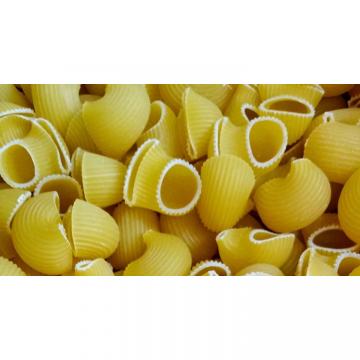

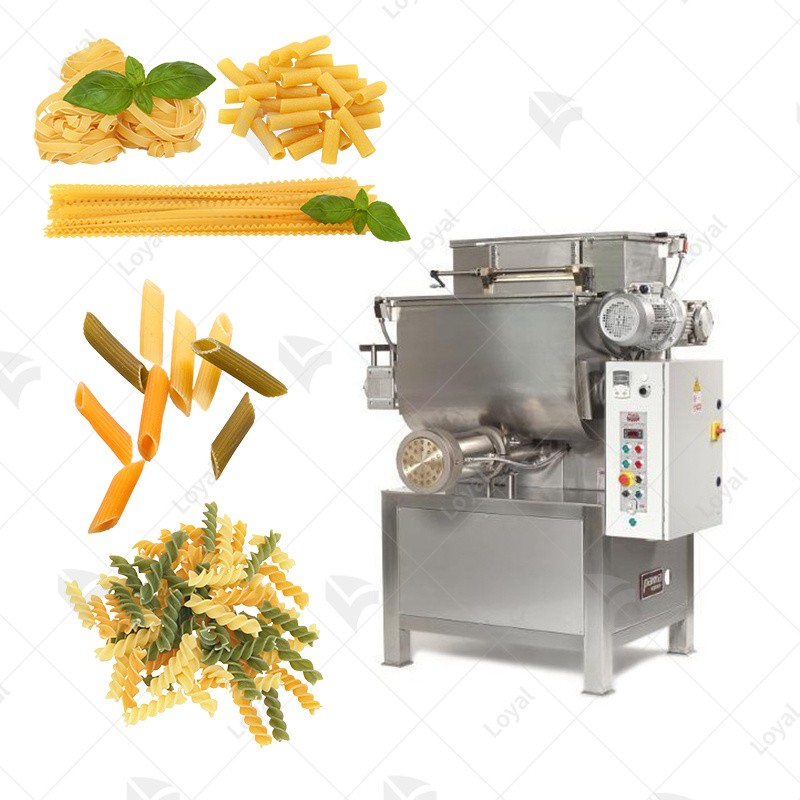

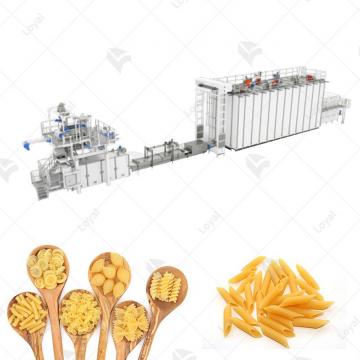
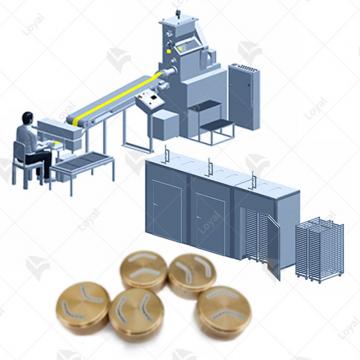 Combined Automatic Pasta Sheeter
Combined Automatic Pasta Sheeter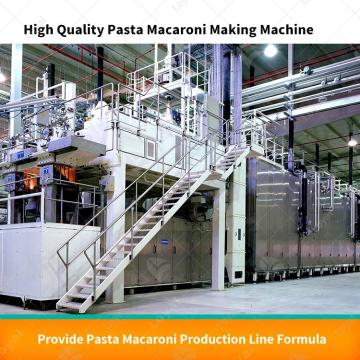 DRY PASTA PRESS MACHINE
DRY PASTA PRESS MACHINE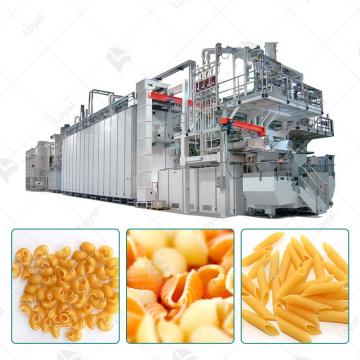 VACUUM PASTA EXTRUDER
VACUUM PASTA EXTRUDER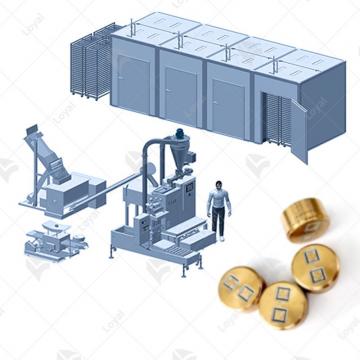 Spaghetti Pasta Production Line
Spaghetti Pasta Production Line